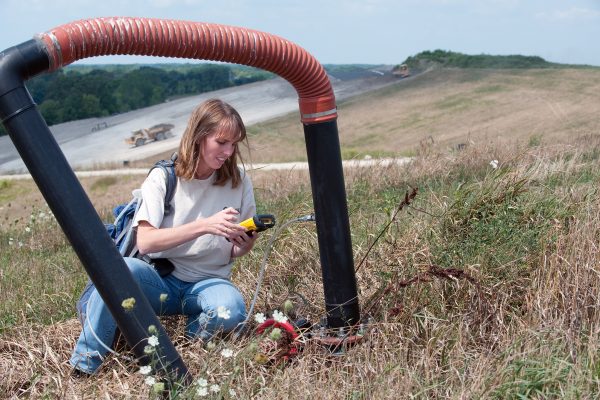Landfill Gas to Energy
In Granger’s two landfills, landfill gas is collected and put to beneficial use making renewable energy.
About Landfill Gas
When organic material decomposes in a landfill, it produces landfill gas. This gas consists of approximately 50 percent methane, 45 percent carbon dioxide and small amounts of other components. The primary component of landfill gas, methane, is a greenhouse gas which can be more harmful to the environment than CO2 if it is not collected. At many landfills, methane is burned in a flare so it isn’t released into the environment. However, in a more productive operation, landfill gas is collected and used as a source of renewable power.
Advantages of Landfill Energy

Reliable source of energy, generated 24 hours a day, seven days a week

Can significantly reduce emissions of methane

Can decrease the need to generate energy from fossil fuels
According to the EPA Landfill Methane Outreach Program (LMOP), landfill gas projects also provide an array of benefits in the local economy:

Can create jobs associated with the design, construction and operation of energy recovery systems

Involve engineers, construction firms, equipment vendors and utilities or end-users of the power produced
